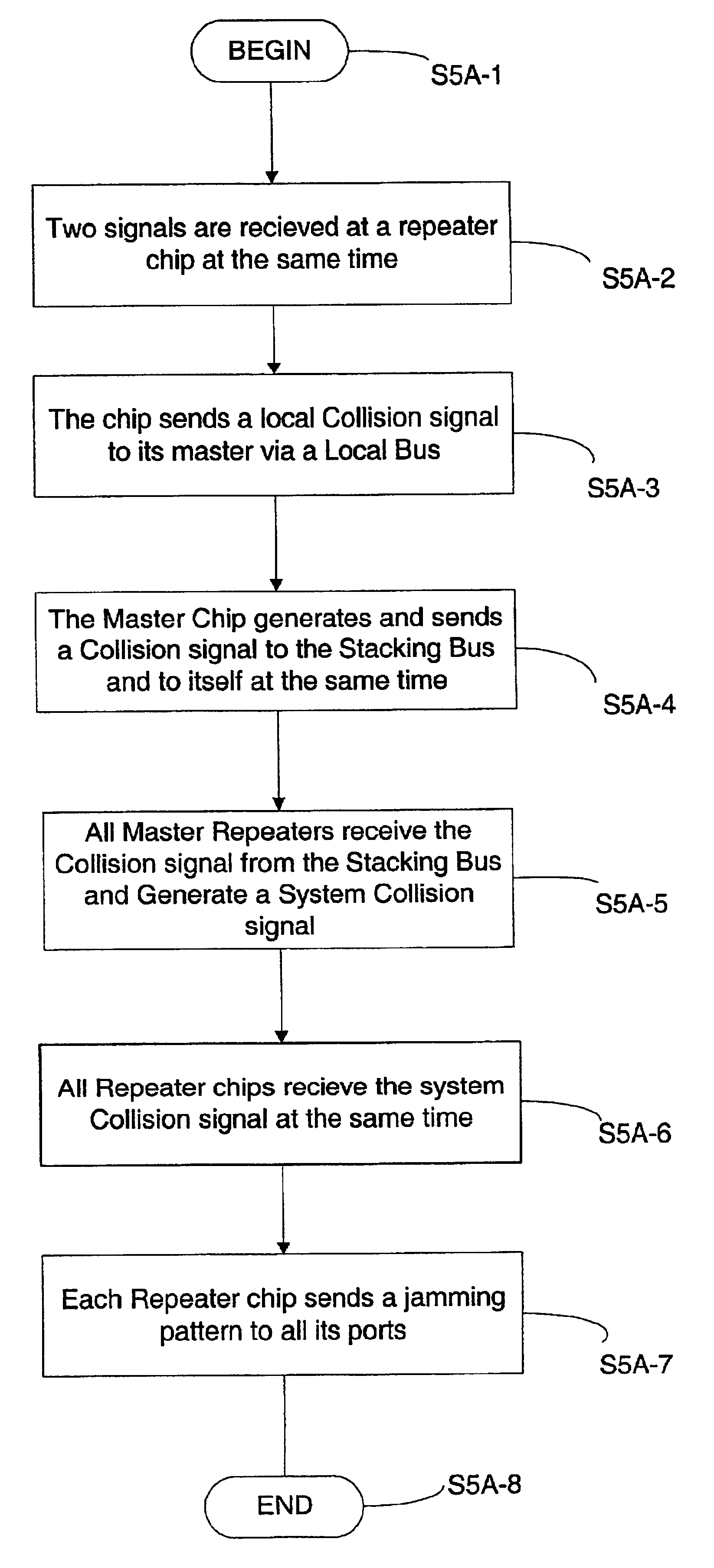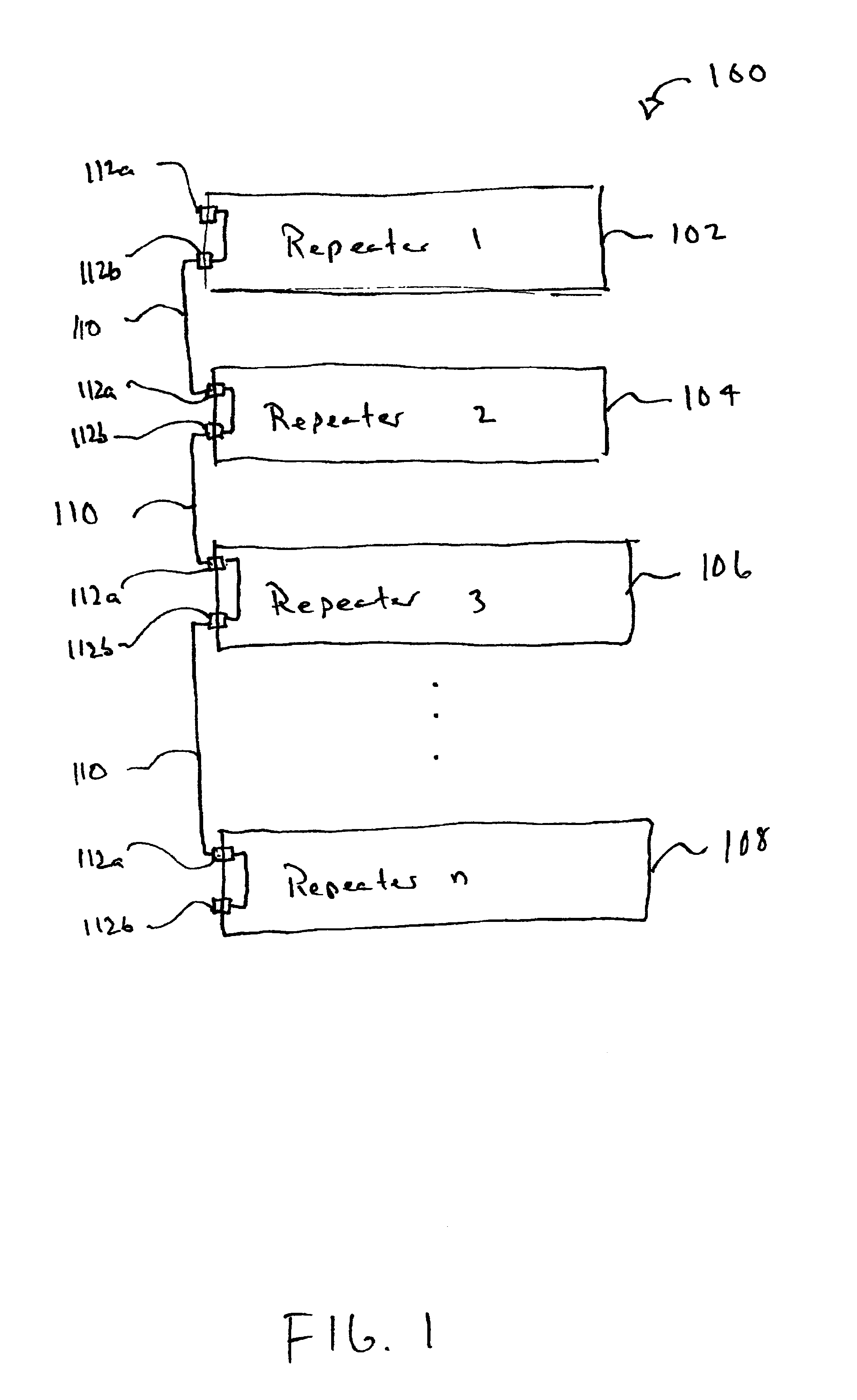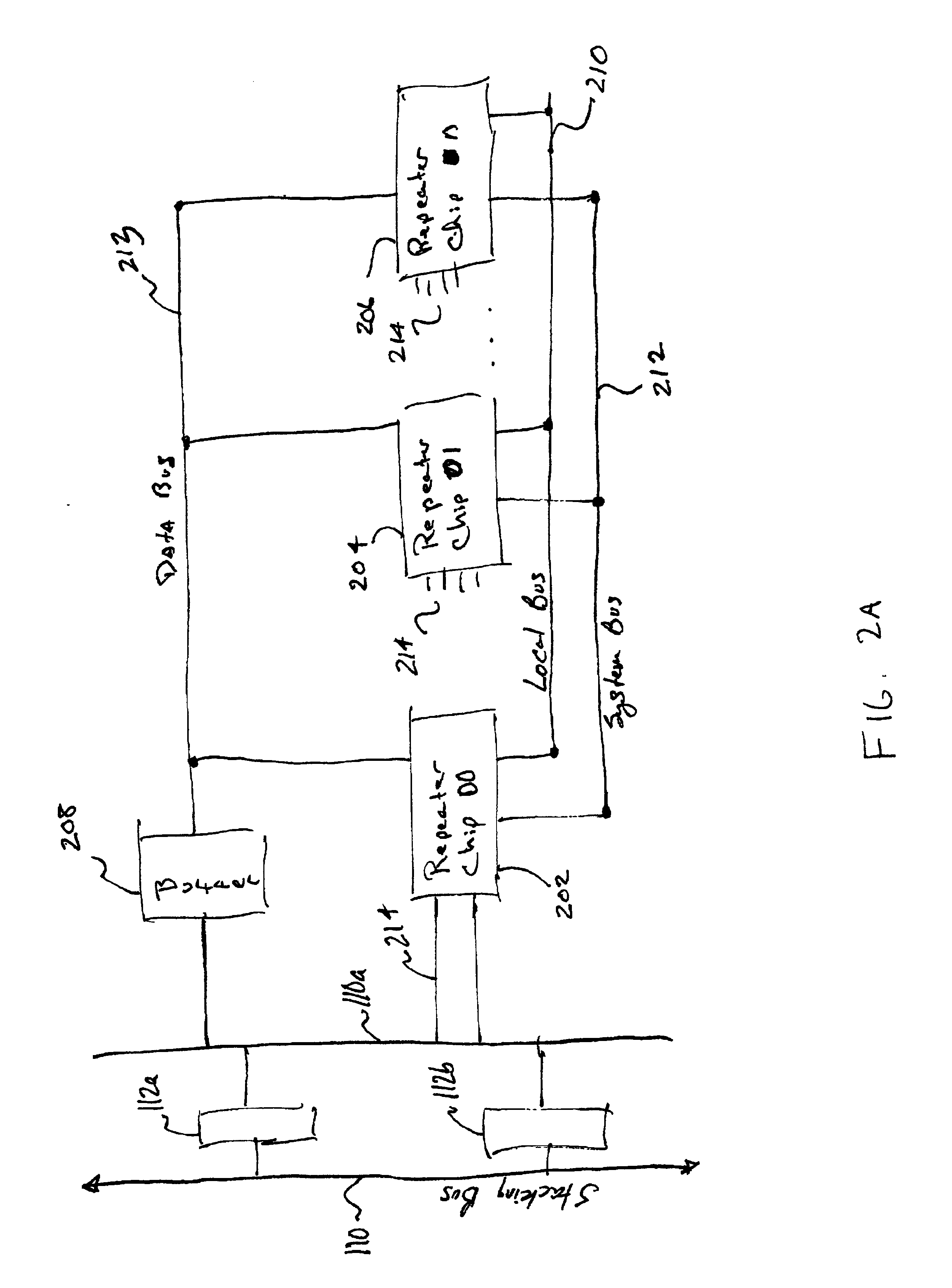Methods and circuits for stacking bus architecture
a stacking bus and circuit technology, applied in the direction of transmission, unauthorized memory use protection, instruments, etc., can solve the problems of signal loss, physical limitations that must be accounted for, and it is almost impossible to find a office in the united states
- Summary
- Abstract
- Description
- Claims
- Application Information
AI Technical Summary
Benefits of technology
Problems solved by technology
Method used
Image
Examples
Embodiment Construction
[0032]The present invention is discussed with reference to the attached drawing figures. Unless otherwise specified, like parts and processes are referred with like reference numbers.
[0033]Referring to FIG. 1, a plurality of repeaters are connected into the same collision domain via stacking bus architecture in accordance with the preferred embodiment of the present invention. In particular, system 100 includes a first repeater 102, a second repeater 104, a third repeater 106 and an unlimited number of repeaters up to and including repeater n 108.
[0034]Each repeater 102 through 108 may be a commercially available repeater (sometimes referred to as a hub) that is appropriately outfitted and configured to perform according to the appropriate standards (e.g., IEEE 802.3, etc.), repeat signals via its physical ports, to detect collisions across its ports and send corresponding collision signals, and may also be outfitted with appropriate hardware and software to perform various function...
PUM
 Login to View More
Login to View More Abstract
Description
Claims
Application Information
 Login to View More
Login to View More - R&D
- Intellectual Property
- Life Sciences
- Materials
- Tech Scout
- Unparalleled Data Quality
- Higher Quality Content
- 60% Fewer Hallucinations
Browse by: Latest US Patents, China's latest patents, Technical Efficacy Thesaurus, Application Domain, Technology Topic, Popular Technical Reports.
© 2025 PatSnap. All rights reserved.Legal|Privacy policy|Modern Slavery Act Transparency Statement|Sitemap|About US| Contact US: help@patsnap.com



